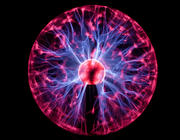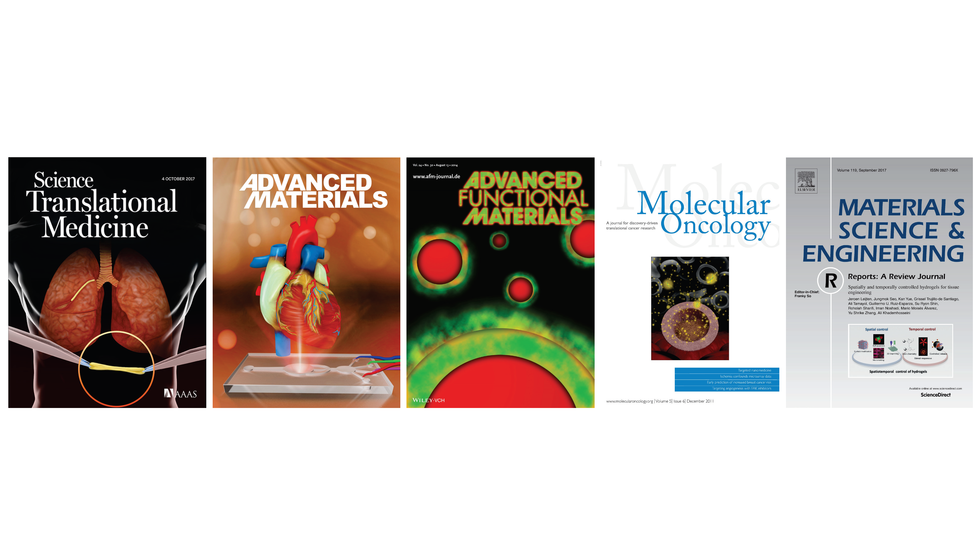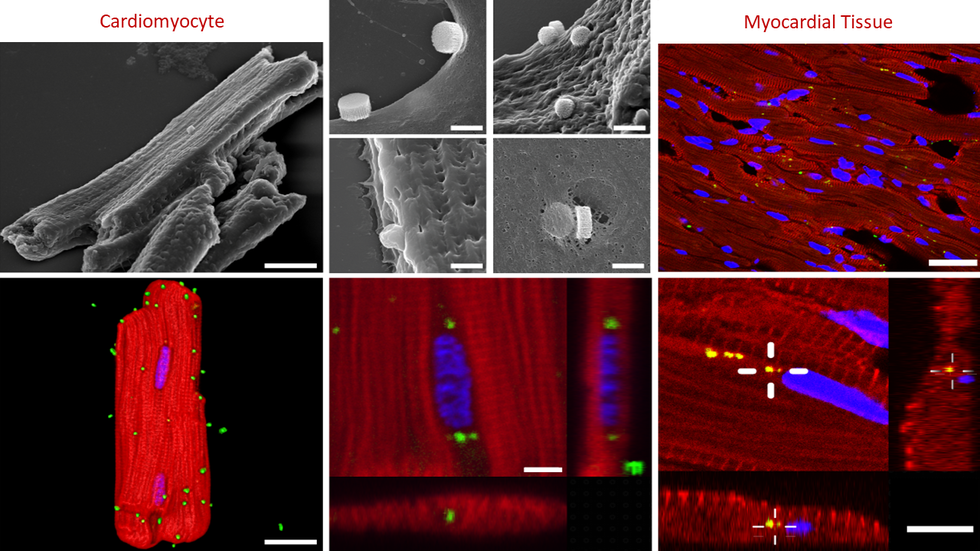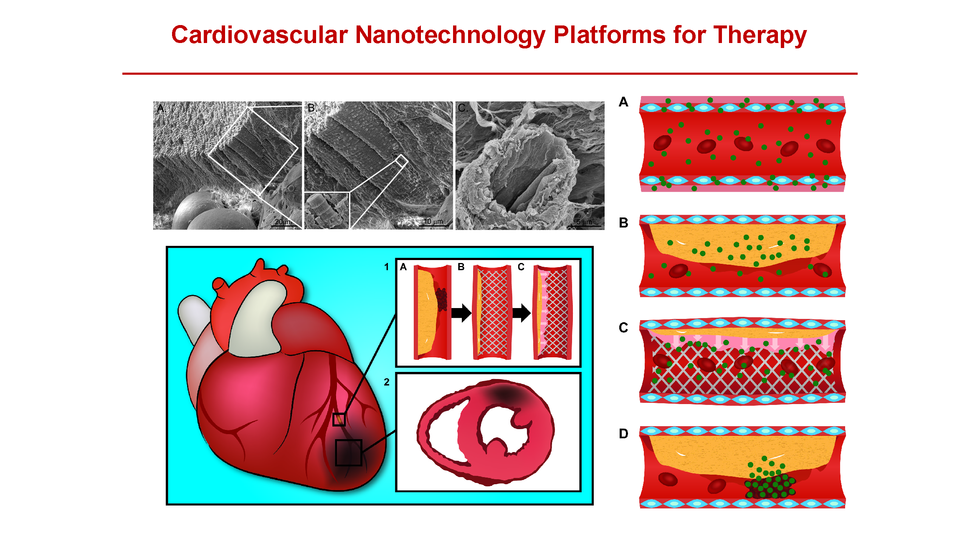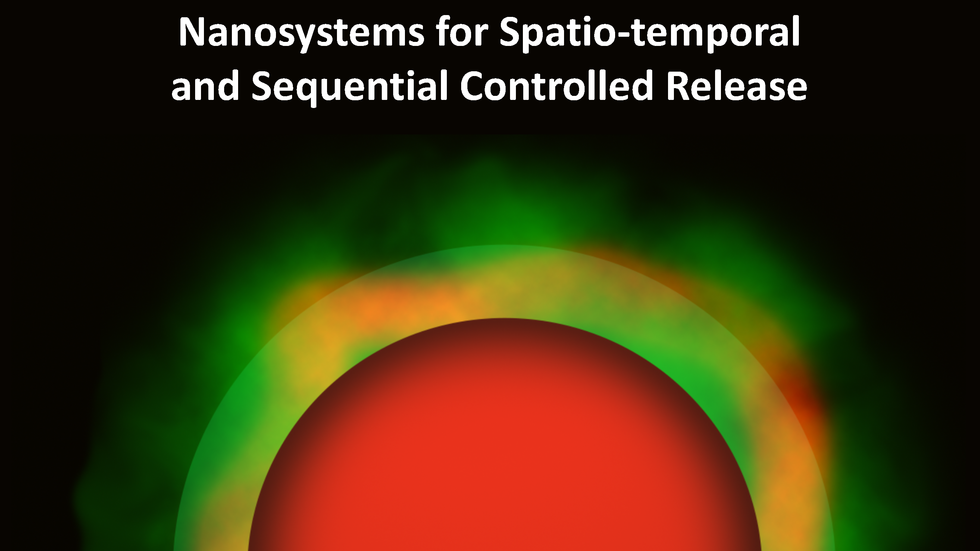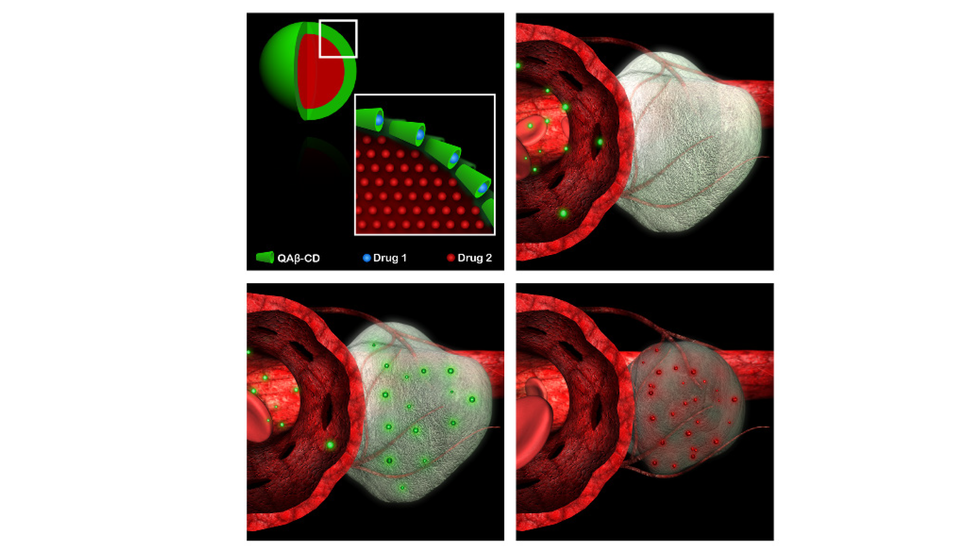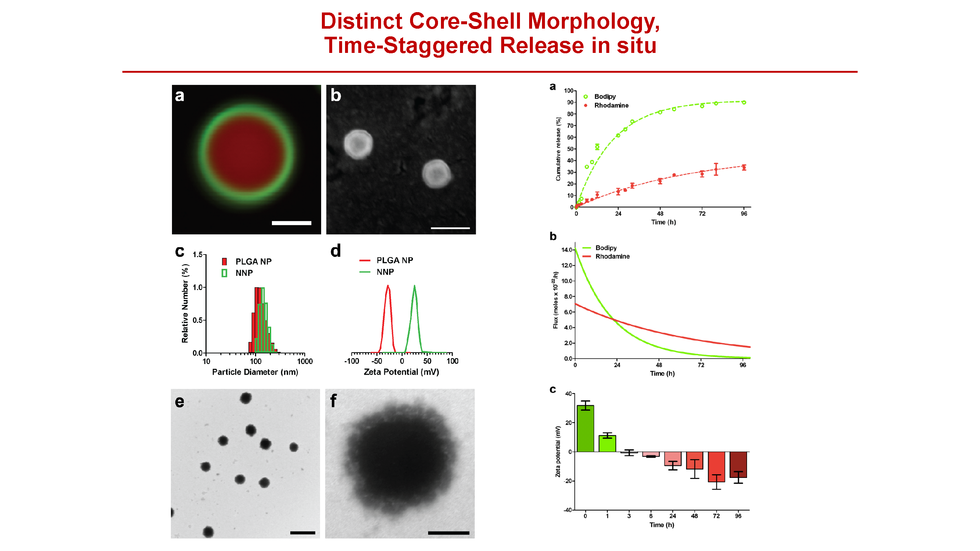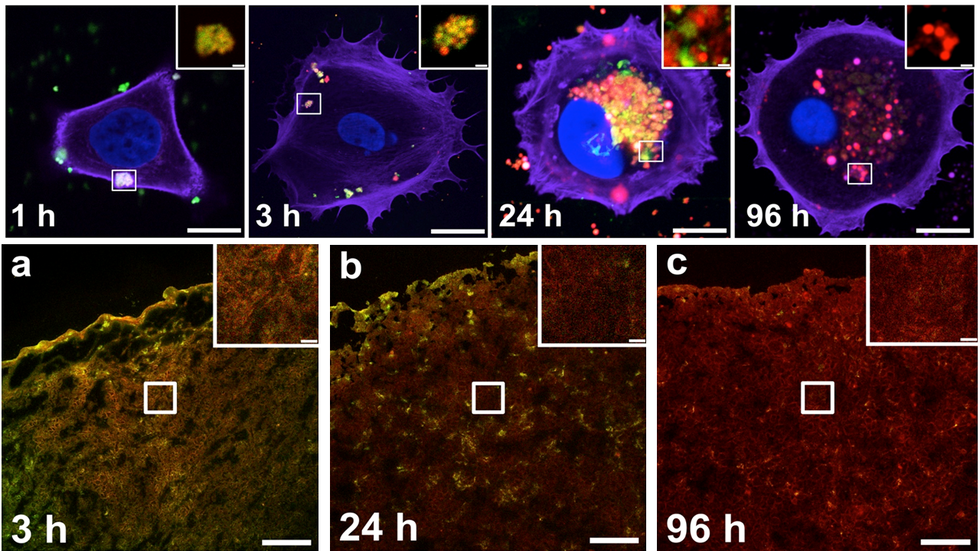Heart Failure Nanotherapeutics
Chronic heart failure in terminal patients has higher mortality than all cancers combined, 1 in 9 deaths have heart failure as contributing cause. It is the number 1 cause of hospitalization and most expensive disease for the US healthcare system (30.7 billion/year). Current therapies do not cure the disease and few patients have access to heart transplantation, new approaches to treat the disease are urgently needed.
Our work at the intersection of medicine and engineering is focused in the creation of site specific nanovectors for the treatment of heart failure. Our nanovectors are programed to travel through the circulation, arrive to the heart and enter inside the cells to deliver agents. With increased cardiac accumulation of nanoparticle encapsulated drugs, therapies will be more specific, side effects will be reduced, and less drug dosage will be needed to create a therapeutic effect enabling a decrease in production costs and final prices. These technologies open the door to deliver and develop new types of therapeutics that could not be delivered to heart failure before, such as genetic material, proteins or hydrophobic drugs.
Our aim is to decrease mortality and costs in the long run, democratizing medicine and increasing the access to nanotherapies around the globe.
Nanosystems for Spatiotemporal and Sequential Therapeutic Release
Development of a nanoparticle based system for spatiotemporal and sequential release of multiple agents. This development is specifically important for cancer therapeutics, as time-staggered combination chemotherapeutic strategies have shown immense potential in cell culture systems and now are used in clinical settings, nevertheless this strategy has fail to successfully translate clinically to its full potential due to different routes of administration and disparate formulation parameters that preclude a specific order of drug presentation, decreasing the synergistic effect and efficacy of current therapies. The nanotechnologies of our team, address the current limitations of polychemotherapy, as they can co-encapsulate different agents within the same nanosystem and after intravenous administration deliver them to cancer cells in a specific order and with a sustained release fashion.
Nanoengineered Hydrogel Technologies
Development of a nanotechnology-based shear-thinning hydrogel for use in surgical applications. Our self-healing hydrogel inhibits cell adhesion and cell growth, acting as a mechanical barrier without toxicity. The hydrogel can be sprayed in the surgical site preventing fibrotic formations and intraperitoneal adhesions often seen in 95% of the patients following surgical interventions or injuries. This invention delivers these benefits in a sprayable formulation compared to current products in the market that exist in the form of films. This nanotechnology in spray form, enables its application to hard to reach cavities and irregular body surfaces that are subject to stretching or extension, something that has not been achieved by current products in the market.
